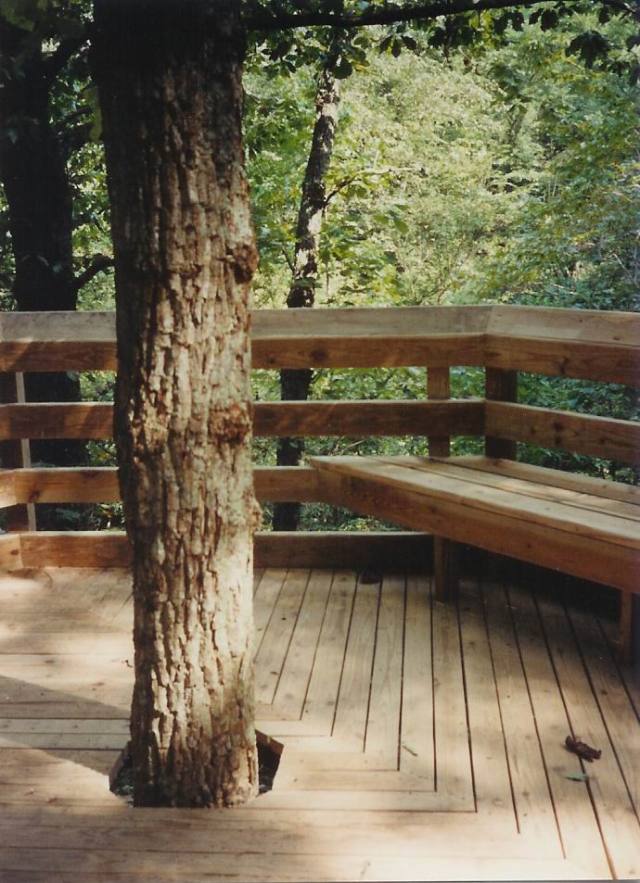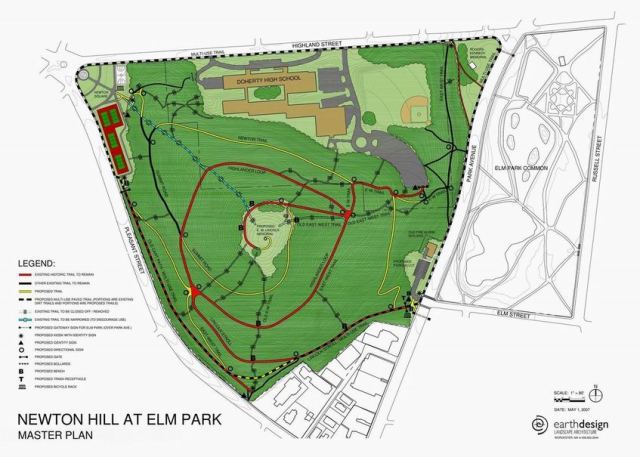About 20 years ago, I designed a system of trails, observation decks, steps, and boardwalks for a 136-acre nature preserve in Cary, North Carolina. It was an absolute delight to work on this project, because Hemlock Bluffs is such a magical place – a natural oasis within an area of suburban development. It features a series of tall north-facing bluffs that shelter a community of Eastern Hemlocks. This is unusual because these trees typically do not grow naturally in the piedmont region of North Carolina – this species is much more common in the cooler Appalachian Mountains more than 200 miles to the west. In addition, the preserve includes an extensive upland forest and a wooded floodplain area with vernal pools and a rich variety of plants.

A system of steps takes visitors down along the bluffs.

One of several observation decks affords views of large Hemlock trees growing on the bluffs.

Plant beds near the Stevens Nature Center building are filled with native wildflowers and trees.

A boardwalk meanders through a lush floodplain.
Photos by Alice Webb






